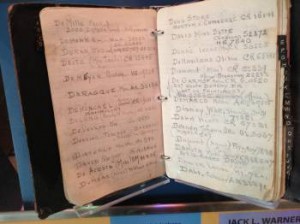Who Put Popcorn and Movies Together?
Posted on October 6, 2013 at 2:14 pm
Smithsonian Magazine goes back 8000 years to find out why we eat popcorn at the movies.
Popcorn–a name mostly associated with puffed kernels of corn–is actually a strain of corn, characterized by especially starchy kernels with hard kernel walls, which help internal pressure build when placed over heat. It was one of the first variations of maize cultivated in Central America….After popcorn made its way to the eastern part of North America, it spread rapidly. Eaters found the act of popping corn wildly entertaining, and by 1848, popcorn, the snack food, was prevalent enough to be included in the Dictionary of Americanisms. Popcorn had literally exploded onto the scene and was available everywhere–especially at entertainment sites like circuses and fairs. In fact, there was really only one entertainment site where the snack was absent: the theaters.
In the early days, movie theaters were modeled after legitimate theaters and movie theater operators did not want popcorn, which was messy and associated with low-budget entertainment. Surprisingly, it was the addition of sound to movies and the wider range of audiences that the talkies attracted that made theater operators turn to popcorn.
The Great Depression presented an excellent opportunity for both movies and popcorn. Looking for a cheap diversion, audiences flocked to the movies. And at 5 to 10 cents a bag, popcorn was a luxury that most people were able to afford. Popcorn kernels themselves were a cheap investment for purveyors, and a $10 bag could last for years. If those inside the theaters couldn’t see the financial lure of popcorn, enterprising street vendors didn’t miss a beat: they bought their own popping machines and sold popcorn outside the theaters to moviegoers before they entered the theater. As Smith explains, early movie theaters literally had signs hung outside their coatrooms, requesting that patrons check their popcorn with their coats. Popcorn, it seems, was the original clandestine movie snack.
This classic ad has even been included in the Library of Congress National Film Registry. (You may have seen a recently updated version reminding you to turn off your phone.)
http://www.youtube.com/watch?v=n9QAPch2o6Q


